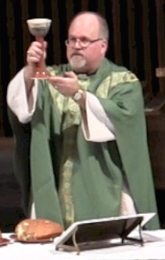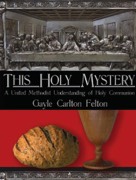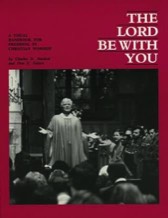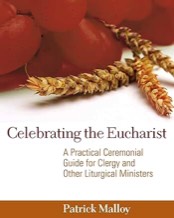How Do You Celebrate The Eucharist?

- Do you stand at the pulpit and woodenly read the liturgy?
- If you stand at or behind the table, do you know what to do with your hands as you preside?
- Do you stumble through the liturgy, as if reading it for the first time?
- Is your presidential style sloppy, disengaged, or unintentional?
- Are you uncomfortable with the language of the liturgy or feel that it no longer applies today?
- Do you find presiding at the table meaningful, or does it feel like an empty ritual?
This is unsurprising, given that many pastors receive only minimal practical training in sacramental leadership—whether through a Conference Course of Study or in worship classes at Seminary. As a result, they feel unprepared to preside at the Lord's Table. Many are unclear about the meaning of different parts of the Great Thanksgiving and worry about "appearing too Catholic" or "out of place." Some rush through the liturgy simply to "get it over with," while others abandon it entirely in favor of an unstructured, extemporaneous approach that aims to be "contemporary" but lacks theological depth.
Even more troubling are those who have dismissed the sacrament altogether, mistakenly believing it to be an outdated relic of primitive tradition that no longer has value in the modern world.

Unsurprisingly, these two goals go hand in hand. The more clergy approach the Table with intentionality and reverence, the more the congregation values the sacrament as part of their spiritual life. As a result, interest has grown not only in the practical aspects of presiding but also in the theology of the Eucharist.
Thankfully, many recourses can help pastors cultivate an authentic, engaging, and spiritually meaningful style of leadership at the Table. Three excellent resources for worship leadership are:
Drawing from these books, my seminary classes, my participation in the Order of Saint Luke, and worship experiences with the Society of Saint John the Evangelist, I developed a sacramental style that is both meaningful, and authentic to my spirituality and our United Methodist understanding of the Eucharist.
In this section I will outline key principles and guidelines based upon my approach, along with suggestions to help fellow clergy develop a style of celebration that feels both authentic and spiritually meaningful to them while also being appealing to their congregations.
In this section I will outline key principles and guidelines based upon my approach, along with suggestions to help fellow clergy develop a style of celebration that feels both authentic and spiritually meaningful to them while also being appealing to their congregations.


